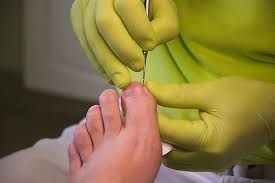
Introduction
Fingernail removal surgery, also known as nail avulsion or nail plate removal, is a medical procedure performed to address various nail-related issues such as infections, trauma, or chronic nail problems. While it is generally considered a minor surgical procedure, patients often wonder about their ability to resume daily activities, including driving and returning to work, after undergoing this surgery. In this article, we will explore the factors that influence your ability to drive or return to work after fingernail removal surgery.
Understanding Fingernail Removal Surgery
Before delving into the post-surgical considerations, let’s briefly understand the nature of fingernail removal surgery. This procedure involves the removal of either a portion or the entire fingernail, typically performed under local anesthesia. Common reasons for this surgery include ingrown nails, nail infections, severe nail trauma, or chronic conditions that affect the nail bed.
Immediate Post-Operative Period
Following fingernail removal surgery, patients usually experience some discomfort, swelling, and potential drainage from the surgical site. It’s crucial to follow your healthcare provider’s post-operative instructions carefully to ensure a smooth recovery. These instructions often include keeping the affected finger elevated, taking prescribed pain medications, and dressing changes.
Returning to Work After Fingernail Removal Surgery
The timeline for returning to work after fingernail removal surgery largely depends on several factors:
- Type and Complexity of the Surgery: The extent of the surgery plays a significant role in determining your ability to return to work promptly. If you had a simple nail avulsion to address an ingrown nail, you might be able to resume work within a day or two. However, more complex procedures may require more extended recovery periods.
- Pain Tolerance: Pain levels can vary from person to person. Some individuals may experience minimal discomfort and be able to return to work sooner, while others may require additional time off to manage their pain.
- Nature of Your Work: The nature of your job also matters. If your occupation involves physical labor or activities that put stress on your hands, you may need to take more time off to allow your finger to heal adequately.
- Healing Progress: Monitoring the healing progress of your surgical site is essential. If you notice signs of infection, increased swelling, or persistent pain, it’s crucial to consult your healthcare provider before resuming work.
- Doctor’s Recommendation: Always follow your doctor’s advice regarding when it is safe to return to work. They will consider your individual case and provide guidance based on your specific circumstances.
Driving After Fingernail Removal Surgery
Driving after fingernail removal surgery is another important consideration. It is generally recommended to avoid driving immediately after the surgery, primarily due to the effects of anesthesia and potential discomfort.
- Anesthesia Effects: Local anesthesia is commonly used during fingernail removal surgery to numb the area. This can temporarily impair your ability to use your hand effectively, making it unsafe to drive immediately after the procedure. You should arrange for someone to drive you home after the surgery.
- Pain and Discomfort: Even after the anesthesia wears off, you may experience some pain, discomfort, or reduced mobility in the operated finger. Driving with these symptoms can be distracting and unsafe.
- Medications: If you are prescribed pain medications, it’s essential to consider their potential side effects, such as drowsiness or impaired coordination. These effects can affect your ability to drive safely.
To determine when it is safe for you to resume driving, consult with your healthcare provider. They will assess your condition, taking into account the specific medications prescribed and your ability to safely operate a vehicle.
Conclusion
Fingernail removal surgery is a relatively common procedure that can help address various nail-related issues. While the recovery period varies depending on several factors, including the type of surgery and individual healing, it is generally recommended to avoid driving immediately after the procedure due to anesthesia effects and potential discomfort. Returning to work also depends on your specific circumstances, and it is crucial to follow your doctor’s guidance to ensure a safe and smooth recovery. Always prioritize your health and safety when making decisions about driving and returning to work after fingernail removal surgery.

